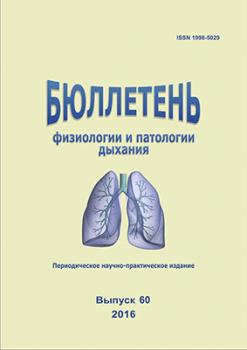One of the methods to evaluate lung function is body plethysmography. Body plethysmography allows to measure indicators that cannot be obtained during spirometry, that is: total lung capacity (TLC), bronchial resistance (Raw), and functional residual capacity (FRC). FRC measured by body plethysmography reflects thoracic gas volume (TGV or VTG), and includes both ventilated and poorly ventilated volume. Plethysmographic measurements are based on the principle of the relationship between pressure and volume at constant temperature and fixed amount of gas. This principle states that the absolute pressure exerted by a given mass of an ideal gas is inversely proportional to the volume it occupies if the temperature and amount of gas remain unchanged within a closed system (Boyle-Mariotte Law). In body plethysmography, the following parameters: TGV, vital capacity (VC), expiratory reserve volume (ERV), tidal volume (TV), inspiratory reserve volume (IRV), inspiratory capacity (IC), Raw are obtained. TLC, residual volume (RV) and its share in total lung capacity can be calculated. Reduced TLC allows to diagnose restrictive disorders of pulmonary ventilation. The RV and its share in TLC increase together with airway obstruction indicates air trapping. The TGV increase together with airway obstruction indicates hyperinflation. In the analysis of lung volumes predictive values, which are calculated by the formulas recommended by ATS/ERS statement, are used. The results are expressed as a percentage of the predicted value. Thus, body plethysmography is an important addition to spirometry and image methods of research, allowing to assess the functional state of the lungs more objectively; it helps to conduct the differential diagnosis and control the course of the disease.
body plethysmography, total lung capacity, intrathoracic gas volume, airway resistance.
1. Belov A.A., Lakshina N.A. Evaluation of respiratory function. Methodological approaches and diagnostic value. Moscow: Russkiy vrach; 2006 (in Russian).
2. Kameneva M.Yu. Study of respiratory function. In: Il´kovich M.M., Kokosov A.N. (eds). Interstitial lung disease: a Guide for Physicians. St. Petersburg: Nordmedizdat; 2005:50-59 (in Russian).
3. Kolʹtsun S.S. Methods for determination of functional residual capacity (FRC). Funktsional´naya diagnostika 2003; 1:65-76 (in Russian).
4. Crofton J., Douglas A. Respiratory diseases. Moscow: Meditsina; 1974 (in Russian).
5. Shik L.L., Kanaev N.N. Guidelines for Clinical Respiratory Physiology. Leningrad: Meditsina; 1980 (in Russian).
6. Savushkina O.I. Body plethysmography: Principles and methods possibilities. The approaches to interpretation the study results. Funktsional´naya diagnostika 2013; 3:48-53 (in Russian).
7. Savushkina O.I, Chernyak A.V., Naumenko G.V. Body plethysmography: theoretical and clinical aspects. Moscow; 2014 (in Russian).
8. Klementa R.F., Kuznetsovoy V.K., editors. Modern problems of clinical physiology of respiration. Leningrad; 1987 (in Russian).
9. Struchkov P.V, Vinnitskaya R.S., Lyukevich I.A. Introduction to the functional diagnosis of external respiration. Moscow; 1996 (in Russian).
10. Chernyak A.V. Measurement of lung volumes. In: Chuchalin A.G. (ed.). Functional diagnosis in pulmonology: a Practical Guide. Moscow: Atmosfera; 2009: 36-62 (in Russian).
11. Goldman M.D., Smith H.J., Ulmer W.T. Whole-body plethysmography. In: Gosselink R., Stam H. (eds). Lung function testing. Eur. Respir. Monogr. 2005; 10:15-43.
12. Pellegrino R., Viegi G., Brusasco V., Crapo R.O., Burgos F., Casaburi R., Coates A., van der Grinten C.P.M., Gustafsson P., Hankinson J., Jensen R., Johnson D.C., MacIntyre N., McKay R., Miller M.R., Navajas D., Pedersen O.F., Wanger J. Interpretative strategies for lung function tests. Eur. Respir. J. 2005; 26(5):948-968.
13. Quanjer P.H. Tammeling G.J., Cotes J.E., Pedersen O.F., Peslin R., Yemault J-C. Lung volumes and forced ventilator flows. Report Working Party Standartization of Lung Function Tests, European Community for Steel and Coal. Official Statement of the European Respiratory Society. Eur. Respir. J. 1993; 6(Suppl.16):5-40.
14. Wanger J., Clausen J.L., Coates A., Pedersen O.F., Brusasco V., Burgos F., Casaburi R., Crapo R., Enright P., van der Grinten C.P.M., Gustafsson P., Hankinson J., Jensen R., Johnson D., MacIntyre N., McKay R., Miller M.R., Navajas D., Pellegrino R., Viegi G. Standardisation of the measurement of lung volumes. Eur. Respir. J. 2005; 26(3):511-522.





